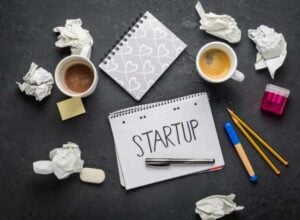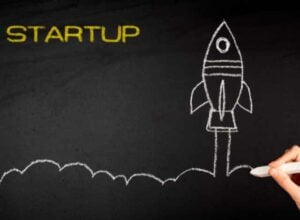In today’s fast-paced corporate environment, the importance of employee wellness cannot be overstated. Organizations are increasingly recognizing that a healthy workforce is not only more productive but also more engaged and satisfied. As a result, many companies are seeking funding to implement comprehensive wellness programs that address the physical, mental, and emotional well-being of their employees.
However, securing funding for these initiatives often requires a well-crafted proposal that clearly articulates the need for the program, its potential impact, and the strategies for implementation. Crafting a successful wellness program funding proposal involves a multifaceted approach. It requires an understanding of the organization’s specific needs and goals, a clear outline of the program’s components, and a detailed budget that justifies the requested funds.
Additionally, incorporating evidence-based interventions and demonstrating the return on investment (ROI) are crucial elements that can significantly enhance the proposal’s effectiveness. This article will provide actionable tips and strategies to help organizations create compelling wellness program funding proposals that resonate with potential funders.
Understanding the Needs and Goals of the Organization
Understanding Employee Needs
By understanding the specific challenges faced by employees—such as high stress levels, sedentary lifestyles, or mental health issues—organizations can tailor their wellness programs to address these needs directly.
Aligning with Organizational Objectives
Moreover, aligning the wellness program with the organization’s overall mission and strategic objectives is vital. For instance, if a company aims to enhance employee retention, the proposal should highlight how the wellness program can contribute to job satisfaction and loyalty.
Creating a Compelling Narrative
By clearly articulating how the program supports broader organizational goals, businesses can create a compelling narrative that resonates with funders who are looking for initiatives that drive measurable outcomes.
Developing an Effective Proposal
This approach enables organizations to develop a comprehensive proposal that effectively communicates the value and potential impact of their wellness program, increasing the likelihood of securing funding and support.
Identifying Key Components of a Strong Wellness Program
A robust wellness program encompasses various components that cater to the diverse needs of employees. These may include physical fitness initiatives, mental health support, nutritional guidance, and stress management resources. When outlining these components in the proposal, it is important to provide a comprehensive overview of each element and how it contributes to overall employee well-being.
For example, a successful wellness program might include regular fitness classes, access to mental health professionals, workshops on healthy eating, and initiatives that promote work-life balance. Real-world examples can be particularly persuasive; organizations like Google and Johnson & Johnson have implemented innovative wellness programs that have led to significant improvements in employee health and productivity. By showcasing these examples in the proposal, organizations can illustrate the potential impact of their own wellness initiatives and inspire confidence in funders.
Developing a Comprehensive Budget and Justification
A well-structured budget is a critical component of any funding proposal. It should provide a detailed breakdown of all anticipated costs associated with the wellness program, including personnel expenses, materials, facilities, and marketing efforts. Each line item should be justified with clear explanations of why these expenses are necessary for the program’s success.
For instance, if the proposal includes hiring a wellness coordinator, it should explain how this role will facilitate program implementation and employee engagement. Additionally, organizations should consider including potential cost-saving measures or partnerships that could reduce expenses without compromising program quality. By presenting a transparent and justified budget, organizations can build trust with funders and demonstrate their commitment to responsible financial management.
Researching and Incorporating Evidence-Based Interventions
Incorporating evidence-based interventions into the wellness program is essential for demonstrating its effectiveness and credibility. Funders are more likely to support initiatives that are grounded in research and have a proven track record of success. Organizations should conduct thorough research to identify best practices in employee wellness and select interventions that align with their specific goals.
For example, studies have shown that workplace fitness programs can lead to reduced healthcare costs and improved employee morale. By referencing relevant research findings in the proposal, organizations can bolster their case for funding and illustrate how their chosen interventions are likely to yield positive outcomes. Additionally, collaborating with experts in public health or wellness can lend further credibility to the proposal and ensure that the program is based on sound principles.
Demonstrating the Return on Investment (ROI) of the Wellness Program
Measuring the Return on Investment
One of the most compelling arguments for funding a wellness program is its potential return on investment (ROI). Organizations should be prepared to present data that illustrates how investing in employee wellness can lead to significant cost savings over time. This may include reductions in healthcare costs, decreased absenteeism, and increased productivity.
Using Case Studies to Demonstrate ROI
To effectively demonstrate ROI, organizations can utilize case studies from similar companies that have successfully implemented wellness programs. For instance, a study by the American Journal of Health Promotion found that companies with comprehensive wellness programs experienced an average ROI of $3.27 for every dollar spent on health promotion initiatives.
Providing Concrete Evidence
By including such statistics in the proposal, organizations can provide concrete evidence of the financial benefits associated with investing in employee wellness.
Addressing Potential Challenges and Mitigating Risks
While crafting a compelling proposal is essential, it is equally important to acknowledge potential challenges and risks associated with implementing a wellness program. Funders appreciate transparency and are more likely to support initiatives that have considered possible obstacles and developed strategies for overcoming them. For example, organizations may face challenges related to employee engagement or participation rates in wellness activities.
To address these concerns, proposals should outline strategies for promoting participation, such as incentives for employees who engage in wellness activities or regular communication about program benefits. Additionally, organizations should consider potential barriers related to budget constraints or resource availability and propose solutions for mitigating these risks.
Presenting a Compelling and Persuasive Proposal
In conclusion, creating a successful funding proposal for a wellness program requires careful planning, research, and strategic thinking. By understanding the organization’s needs and goals, identifying key components of the program, developing a comprehensive budget, incorporating evidence-based interventions, demonstrating ROI, and addressing potential challenges, organizations can present a compelling case for funding. Ultimately, a well-crafted proposal not only highlights the importance of employee wellness but also showcases the organization’s commitment to fostering a healthy work environment.
By following these actionable tips and strategies, businesses can enhance their chances of securing funding for their wellness initiatives and contribute to the overall well-being of their workforce. As companies continue to prioritize employee health in an increasingly competitive landscape, investing in effective wellness programs will undoubtedly yield long-term benefits for both employees and organizations alike.























